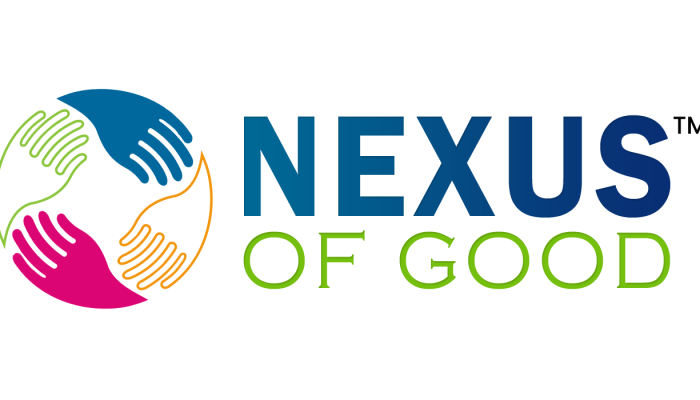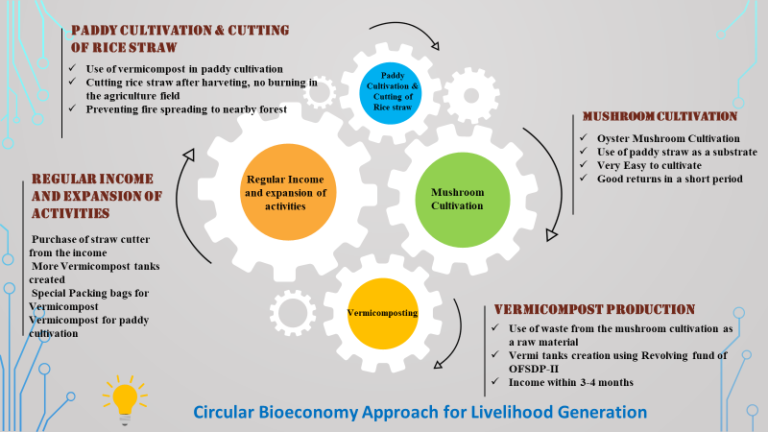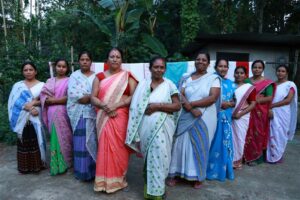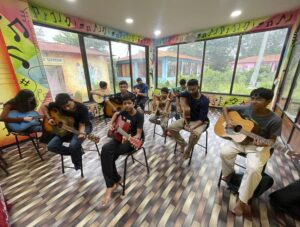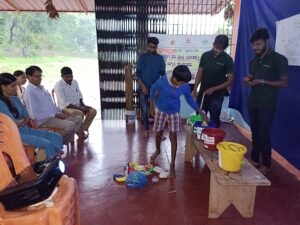“If you want to go quickly, go alone. If you want to go far, go together.”
This dictum shows us the importance of working in a group, working by involving community. This was once again proved by Phuldhudi Vana Surakshya Samiti (Forest Protection Committee) in Tribal dominated Sundargarh district of Odisha.
Sundargarh is the land of hills and forests, rivers and streams, minerals, biodiversity and abundant forest & wildlife resources. This is a tribal dominated district and is famous for its ancient tribal culture. Under Odisha Forestry Sector Development Programme (OFSDP-II) of Odisha State Forest Department, funded by Japan International Cooperation agency (JICA), forest divisions have implemented joint forest management (JFM) principles by involving local communities for forest protection, whilst generating livelihood opportunities for these tribal and forest dependant communities. Phuldhudi VSS in Sundargarh Forest Division is one such glaring example.
Phuldhudi VSS had been assigned a forest area in Sapnabira RF near the village for its protection and rejuvenation. Similarly, many income generating activities (IGAs) were proposed for their economic upliftment. In the year July-2018, during the initial stages of implementation of the project, it was proposed before the SHG members of Phuldhudi VSS to start mushroom cultivation when there was a topic of discussion about livelihood generation in their executive committee meeting.
Then, members of Shibani SHG took the lead role and started doing mushroom farming from their seed capital and from other sources leveraged by the DFO, Sundargarh. The skill development and progress monitoring were done by Project Officials, KVK, Sundargarh & Horticulture department. In the first phase, they invested Rs.16,200, out of which around 70% was the cost of paddy straw.
Paddy is the main crop in this belt. The villagers were motivated to use traditional paddy harvesting methods, which provided them long straws to be used in mushroom cultivation and reduced paddy straw fire drastically and most importantly; this reduced their input cost for mushroom cultivation. They got total Rs.42,000 of income and the profit was Rs.25,800 during the span of 3 months. At first, they started doing the farming in their backyard. Gradually they developed a shade-net by their own initiative. Slowly they expanded their business individually along with group activities.
They got encouraged more and more due to the continuous follow up and the visits of forest department officials to their setup. Around 90 % of produce was sold in their doorsteps and they started to get profit in lakhs. During 2022-23, 40 nos. of members from different SHGs were involved in mushroom farming and produced 57.45 quintal of mushroom and after their self-consumption, sold around 53.55 Quintal, reaping the profit of Rs. 13,26,822.
These organized set-ups of resources played the key role of the rise of another IGA in the form of Vermicompost during 2022. Present DFO, Sundargarh advised to try Vermicompost production through the available resources with the buy-back guarantee of Vermicompost, which will be utilized in different plantation of the Sundargarh Forest Division. During 2022-23, 16 members from different SHGs & some Poorest of the Poor (PoPs) were involved in the IGA by constructing 30 nos. of vermicompost tanks and sold 310 quintals generating Rs. 3.24 Lakh as profit.
Due to the first-time input cost (tank & Vermi) the profit was less, but from April 2023, the profit increased because of use of the existing tank and same Vermins taken out from previous harvest. Since April 2023, 44 members (SHGs & 5 nos. of PoPs) have been involved in this IGA increasing the no. of tanks to 75. This year, they are about to sell around 1060 quintals of vermicompost, which will give them around Rs. 13 Lakh as profit. Apart from assured buy back from the Sundargarh Forest Division, they have supplied their vermicompost to other districts such as Deogarh, Sambalpur, etc. This has instilled a sense of confidence in the women of the Phuldhudi villages as well as nearby villages.
This intervention has been implemented with a circular bioeconomy model, wherein everything is being used up in the different components of the system, providing optimum and sustainable utilization of available resources and giving enhanced profit within a short time. The paddy straw harvested from the field are being used in mushroom cultivation as a substrate material. Further, the used substratum waste from mushroom farming along with household vegetable waste are being used as a raw material in vermicompost production and the vermicompost produced is being used by the villagers themselves in agriculture field for production of paddy and vegetables.
Besides this, the cutting of rice straw after the paddy harvesting has resulted in reduction of post-harvest burning in agriculture land and prevention of spread of this fire to nearby fringe forest areas. This initiative was implemented by many VSSs for the protection of forest area assigned to them. In near future, it is planned to take up dairy farming due to growing demand of milk and milk product and to utilise the cow dung for vermicompost production to further strengthen the IGA chain, certification of organic vegetable and organic paddy in a cluster approach.
These two IGAs have proved to be a sustainable livelihood source for them. This model of Phuldhudi VSS has shown a way to others to follow their footstep for forest protection with livelihood generation.
